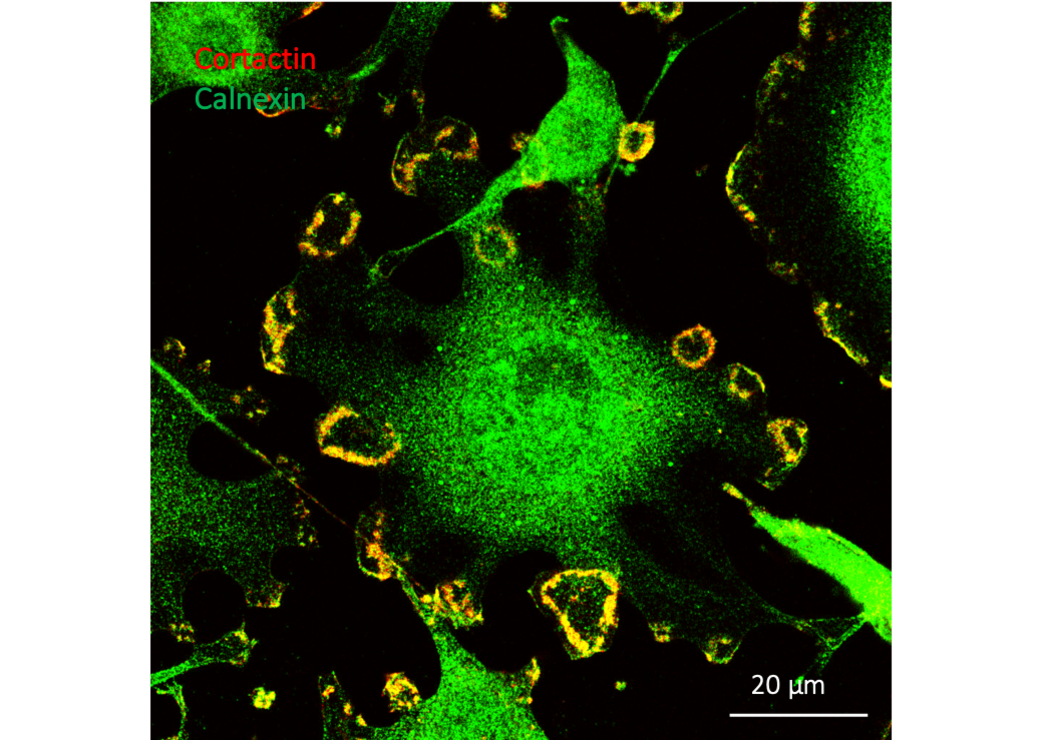New publication of Team 1 in Nature Cell Biology
The work of Manon Ros (PhD student) performed during the first part of her PhD in the lab of F. Bard in Singapore and in collaboration with F. Saltel, was published in Nature Cell Biology. This work identified a new role of the ER-resident Calnexin and its partner Erp57 at the cell surface that promotes tumor cell invasion.

- 21/09/2020
 Cortactin and Calnexin colocalisation at invadosome rosettes in NIH-3T3-Src cells
Cortactin and Calnexin colocalisation at invadosome rosettes in NIH-3T3-Src cells
ER-resident oxidoreductases surface to promote matrix degradation and tumor invasiveness
Manon Ros, Anh Tuan Nguyen, Joanne Chia, Son Le Tran, Xavier Le Guezennec, Ruth McDowall, Sergey Vakhrushev, Henrik Clausen, Martin J. Humphries, Frederic Saltel, Frederic A. Bard
In this study, we could show that, in cancer cells, the ER-resident proteins calnexin and ERp57 are translocated to the cell surface into invadosomes, where they help reduce ECM disulfide bonds before ECM clivage by MMPs. We highlighted a new key step in extracellular matrix (ECM) degradation and tumor invasion.
Abstract:
Tumor growth and invasiveness require extracellular matrix (ECM) degradation and are stimulated by the GALA pathway, which induces protein O-glycosylation in the ER. ECM degradation requires metalloproteases but whether other enzymes are required is unclear. Here, we show that GALA induces glycosylation of ER-resident Calnexin (Cnx) in breast and liver cancer. Glycosylated Cnx and its partner ERp57 are trafficked to invadosomes, sites of ECM degradation. We find that disulfide bridges are abundant in connective and liver ECM. Cell surface Cnx/ERp57 complex reduces these extracellular disulfide bonds and is essential for ECM degradation. In vivo, liver cancer cells but not hepatocytes display cell surface Cnx. Liver tumor growth and lung metastasis of breast and liver cancer cells are inhibited by anti-Cnx antibodies. These findings uncover a moonlighting function of Cnx/ERp57 at the cell surface essential for ECM breakdown and tumor development.




